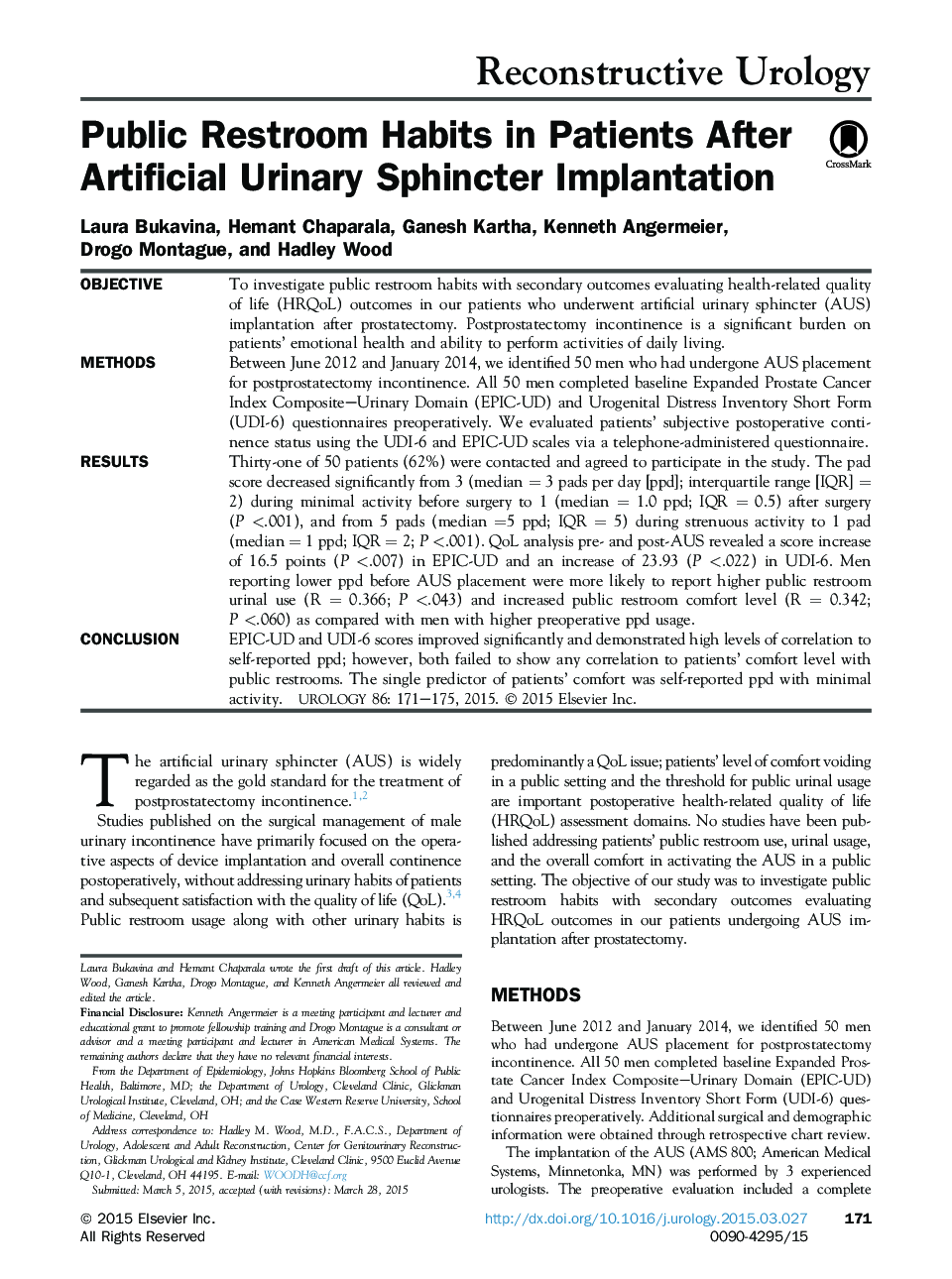| کد مقاله | کد نشریه | سال انتشار | مقاله انگلیسی | نسخه تمام متن |
|---|---|---|---|---|
| 3898518 | 1250302 | 2015 | 5 صفحه PDF | دانلود رایگان |
ObjectiveTo investigate public restroom habits with secondary outcomes evaluating health-related quality of life (HRQoL) outcomes in our patients who underwent artificial urinary sphincter (AUS) implantation after prostatectomy. Postprostatectomy incontinence is a significant burden on patients' emotional health and ability to perform activities of daily living.MethodsBetween June 2012 and January 2014, we identified 50 men who had undergone AUS placement for postprostatectomy incontinence. All 50 men completed baseline Expanded Prostate Cancer Index Composite–Urinary Domain (EPIC-UD) and Urogenital Distress Inventory Short Form (UDI-6) questionnaires preoperatively. We evaluated patients' subjective postoperative continence status using the UDI-6 and EPIC-UD scales via a telephone-administered questionnaire.ResultsThirty-one of 50 patients (62%) were contacted and agreed to participate in the study. The pad score decreased significantly from 3 (median = 3 pads per day [ppd]; interquartile range [IQR] = 2) during minimal activity before surgery to 1 (median = 1.0 ppd; IQR = 0.5) after surgery (P <.001), and from 5 pads (median =5 ppd; IQR = 5) during strenuous activity to 1 pad (median = 1 ppd; IQR = 2; P <.001). QoL analysis pre- and post-AUS revealed a score increase of 16.5 points (P <.007) in EPIC-UD and an increase of 23.93 (P <.022) in UDI-6. Men reporting lower ppd before AUS placement were more likely to report higher public restroom urinal use (R = 0.366; P <.043) and increased public restroom comfort level (R = 0.342; P <.060) as compared with men with higher preoperative ppd usage.ConclusionEPIC-UD and UDI-6 scores improved significantly and demonstrated high levels of correlation to self-reported ppd; however, both failed to show any correlation to patients' comfort level with public restrooms. The single predictor of patients' comfort was self-reported ppd with minimal activity.
Journal: Urology - Volume 86, Issue 1, July 2015, Pages 171–175
